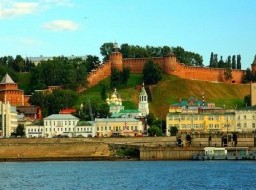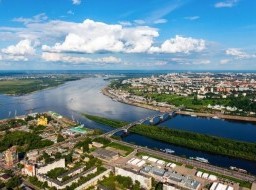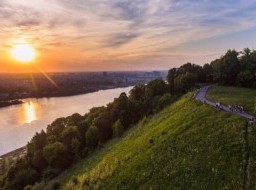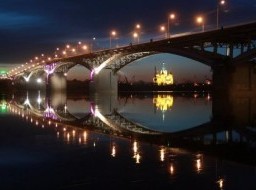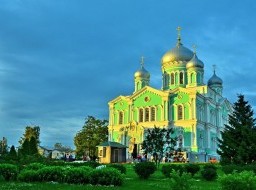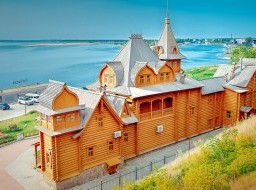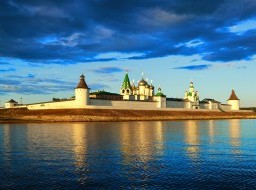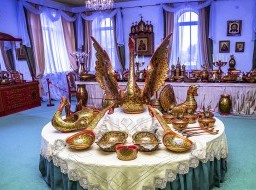Makarievo (Makarjevo)
Makarjevo is an industrial community in Lyskovsky district of Nizhegorodsky region which is situated in 130 km from Dzerzhinsk on the left bank of the river Volga. Makarjevsky monastery is the main sightseeing of the village. It was founded in 1435 by monk Makarij who was lately canonized. Some years later the monastery was ruined by Tatars and Makarij had to leave that place. Two hundred years later the monastery was reconstructed and named Makarjevsky Zheltovodsky. It was called Zheltovodsky because it stood on the place of Lake Zheltoe (Yellow) which had been absorbed by the river Volga. Makarjevsky monastery had a very good geographical position that helped to develop trade here. Makarjevskaya trade fair was officially founded in 1641 when tsar Mikhail Fedorovitch ordered to give all fees income from the trade to the monastery. After that the monastery became rich and began to build cathedrals. A fortress wall was built around the monastery and the trade fair. Soon a settlement appeared near the monastery which in 1779 became a district town Makarjev. Future Patriarch Nikon lived in Makarjevsky monastery in the 17th century. His contemporary and opponent protopope Avvakum, the author of the famous “Zhitie” (Life), came to Makarjevsky monastery. In 1816 the fairground buildings were burnt, and the trade fair was moved to Nizhny Novgorod. The monastery was closed in 1868. It was opened only in 1883 but it became a convent. The convent existed till 1927. Then it was used as an orphanage, a hospital, a college. Nowadays Makarjevsky monastery is a convent again. The cathedrals have been reconstructed, the territory has been landscaped. The white stone walls of the monastery can be seen from the river Volga. The ensemble of the monastery is considered to be the main sightseeing of the village. It includes fortress walls with the towers, Trinity Cathedral, Mikhailarkhangelsky and Uspenskaya churches, cells of the 17th century. Thousands of tourists visit the monastery every year to see the wonderful cathedrals, ancient frescoes on the walls of the churches and to study the Christian culture. |

